VW Golf GTI – we drive all seven generations of the legendary hot hatch

Here on the motoring desk, we accept that not everybody shares our enthusiasm for cars. We acknowledge that the machines we love are little more than boring workaday tools for millions of Brits, and we recognise that some of our favourite models are obscure or unremarkable to our colleagues reporting on, say, business or fashion.
Which is why cars like the Golf GTI make such a change. Pretty much everybody has heard of it, and a startlingly huge number of people have owned – or have really wanted to own – one. What’s more, there are around 75,000 Golf GTIs currently on the road, making it arguably the most popular performance car in the country.
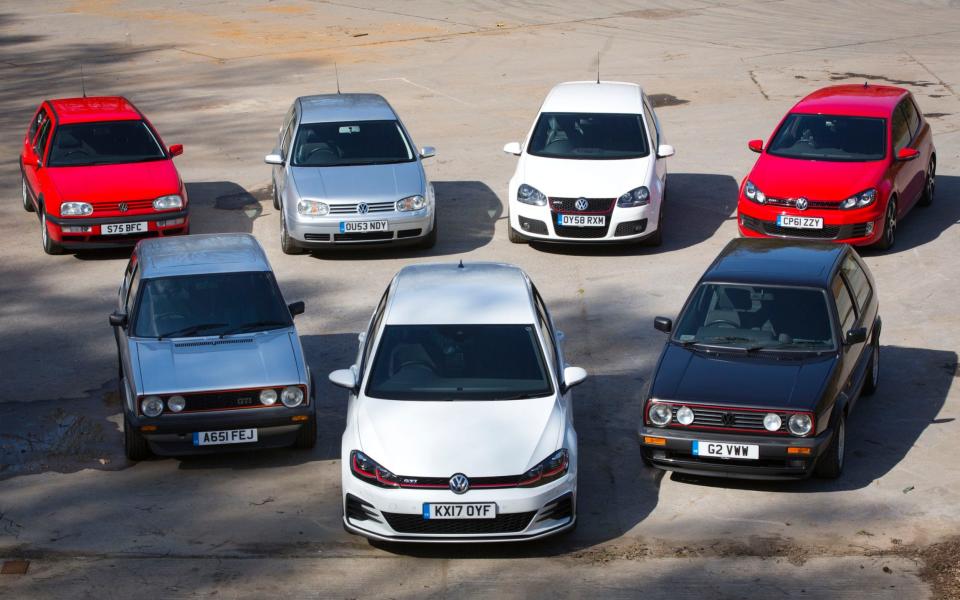
How did it reach the point where, like Ferrari and Land Rover, everybody knows the name of this humble hot hatch? What happened on the journey from artist’s sketch to showroom floor that made it such an iconic product? And whose idea was it anyway?
The “Sport Golf”
The journey begins in the late 1960s. The ageing Beetle was in dire need of replacement. Heinrich Nordhoff, the man who led Volkswagen on its recovery from the Second World War, died in 1968, leaving behind a trail of discarded prototypes. He was succeeded by Kurt Lotz, only the second boss of post-war VW, who set about finding a replacement for the iconic Bug.
Italian designer Giorgetto Giugiaro was chosen to create the new car. Some of its inner workings were to come from Auto Union AG, a company that Volkswagen had recently acquired and that would become part of Audi. The result was an attractive, practical car that could compete with the Escort, Marina, Cortina, Allegro, Mini and the other front-engined, water-cooled cars that European buyers had started to favour. It’s popularity was immediate and convincing.

But that only accounts for the success of the vanilla Golf, a car cleverly and carefully built to meet the existing needs of a global market. The GTI, which happened as a very direct result, was altogether more impulsive, and it’s only thanks to the culture of early-1970s Volkswagen and the cantankerous ambition of a small group of men that I’m writing this today.
There’s a degree of ‘creation myth’ to this story, but suffice to say the Golf GTI began with furtive evening meetings of several engineers, one of whom was definitely called Herbert. Armed with newly-acquired Audi technology and the belief that the Golf could and should be made to go faster, this secret group began work on their clandestine project at some point in 1974 or 1975.
They took a 1.6-litre Audi engine and ripped the carbs off, replacing them with a Bosch fuel injection system and consequently making their prototype, then dubbed the “Sport Golf”, a serious car for the time. They added a Heron head – a la Alfasud – increased the size of the inlet valves and raised the compression ratio. It was schporty.
They’d squeezed 110bhp out of the engine and put it into a car that had previously only accommodated 75 horses. Bilstein dampers were put in the front MacPherson struts (something that sounds rather obvious today, but which in the mid-Seventies was not a normal thing for a car company to do) and the brakes were improved. An air dam was added.
Volkswagen bosses were impressed when they were finally presented with this secret car but the company’s expectation of the “Golf Sport” was low. It received the GTI badge and lukewarm internal reception in August 1975 before being paraded at the Frankfurt Motor Show that September, where the waiting public recognised it for the legend it was about to become.
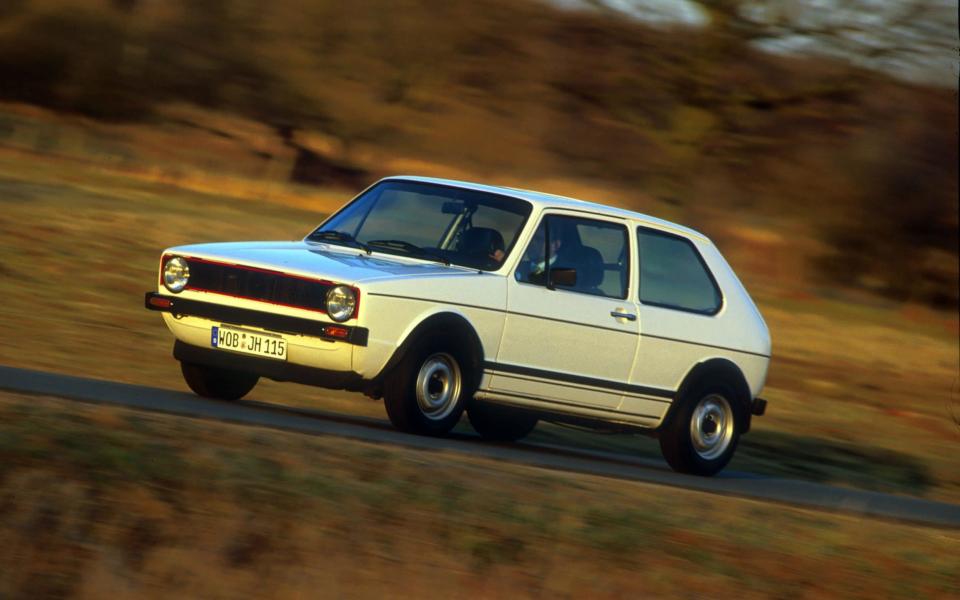
British motorists were rather omitted from the festivities, however. As Golf GTIs flew off their production lines and onto the driveways of Europeans, just a handful were shipped to the UK. To make matters even more frustrating for Brits, all the early models were left-hand-drive. It wasn’t until 1979 that the first right-hookers turned up, causing GTI sales figures to breach four figures almost instantly.
Bear in mind that the Beetle was in still production in Germany until 1978. Against a backdrop of primitive post-war bangers and an embryonic family hatchback market the first Mk2 GTI must have felt phenomenal.
Volkswagen Golf GTI Mk1 review
Our test car is a much later 1983 Mk1. By this stage, the Golf GTI had received an upgrade – it sports a bored-out 112bhp, 1.8-litre with more accessible torque. It’s also got a five-speed manual, giving it an impressive 25% increase in number of gears compared to the early cars.

This, it turns out, is punchy. Ignoring the dated interface for a moment, the Mk1 Golf GTI behaves on a runway as you’d expect a much later warm hatch to. It would reach 60mph in 8.1 seconds when it was new and this meticulously maintained example from Volkswagen’s own fleet comes very close to this box-fresh figure. The closest modern comparisons I can think of are the mid-Noughties Fiesta ST, a Swift Sport from the same era, or possibly a current Vauxhall Adam S or Abarth 595.
It’s not until you turn the wheel that the Mk1feels old. You give it an initial twist before being forced to tug a little harder as the ancient mechanism uses up its elasticity. You find yourself holding on for dear life if (as I did) you forget how non-assisted steering behaved at speed. I’m amazed that anybody survived the Seventies.

When everything’s back under control, it’s extremely enjoyable. There’s more feedback in this system than almost anything else I’ve driven this year, and the body roll is fun rather than ungainly. The only proper shock comes when you try to slow down – the effect that the middle pedal has on the car’s velocity is barely perceptible. Of all the car’s characteristics, only this unwillingness to stop would deter me from driving one every day.
The interior is a treat. The focal point is surely the golf ball gear knob, which sits in front of three equally charming dials. On the right is an oil pressure gauge, which flickers spasmodically from left to right as you rev the engine. In the middle is a voltmeter, complete with red and green markings, and on the left is a clock that actually ticks.
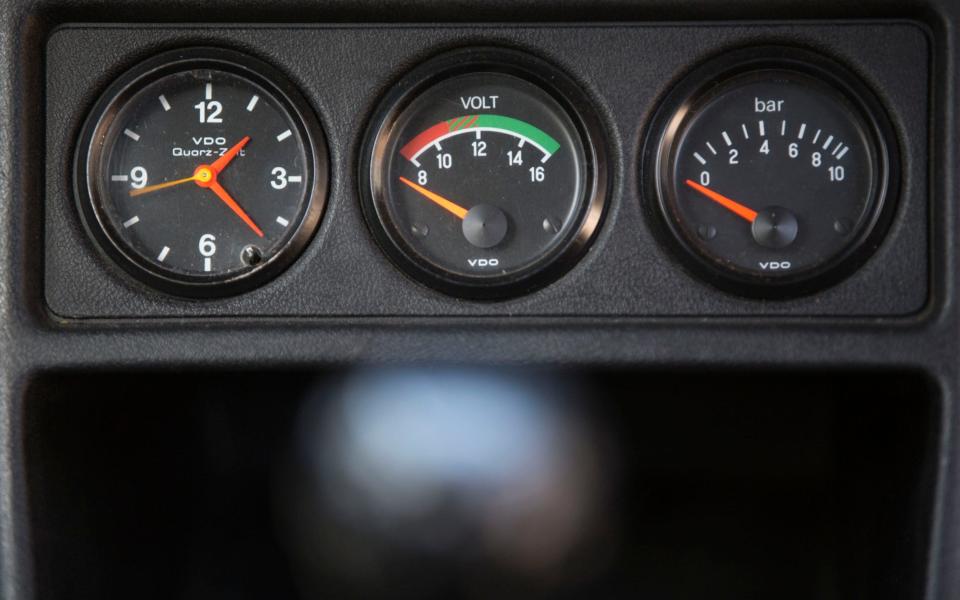
The foam seats are comfortable and supportive. A modern “hot hatch” might be expected to come with bucket seats but that’s not the vibe that Volkswagen was going for here. Like the rest of the Mk1 GTI, the interior is understated and useable. A chunky radio cassette player and an overdrive-y fifth gear make this a car I’d be happy to share a long journey with.
Volkswagen Golf GTI Mk2 review
Volkswagen unveiled the Mk2 Golf the same year that this Mk1 was built. The Golf was already a phenomenon, so the crowds at the Frankfurt Motor Show that September knew roughly what to expect. The Maestro, Astra, Escort and several other Japanese and European models had arrived and were also sporting a front-engined, front-wheel-drive format. The Golf had competition.

This GTI (another late model, built in 1991) bears some resemblance to its predecessor, inheriting certain style elements that had already come to represent the GTI sub-brand – the red detailing around the grille, the golfball gear knob, and a subtle ‘GTI’ badge on the back. It was still an innocuous presence on the road, but it had grown. It was wider, longer and heavier to the tune of around one extra passenger’s worth of kilos.
But it had the same engine. This, along with several other factors, pushed the 0-60 time up by a second. The 8-valve engine in this car feels a bit breathless under acceleration, the quid pro quo being brakes that actually work. The Mk2 is a better car to drive, namely thanks to less a different type of power-on oversteer, and while it lacks the sparkly lightness of the Mk1 it’s fundamentally easier to manage in almost all situations. I can see the appeal.
Volkswagen Golf GTI Mk3 review
Replacing the Mk2 must have been a tough job. The second-generation car was adored by the motoring public and was well-regarded by the press at the time. But when the time came to design the Mk3, engineers at Wolfsburg were faced with a new, sometimes conflicting set of criteria.
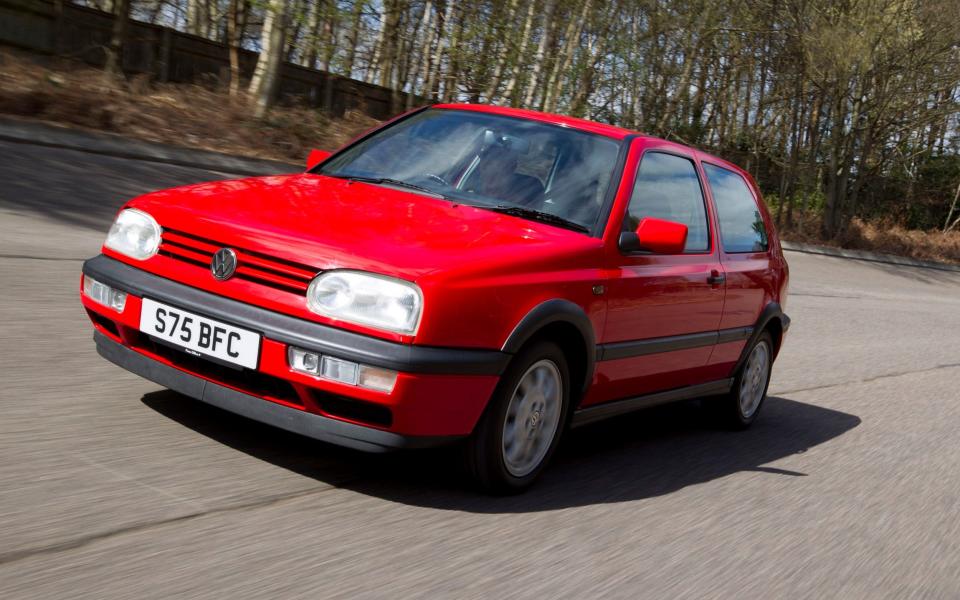
For starters, the new car had to be safer, which tends to mean heavier and larger. It also needed to be more refined, which meant less direct handling, and more efficient, which meant less impressive performance. These factors conspired to make the Mk3 Golf GTI one of the most complained-about models in hot hatch history.
That confuses me, as it’s actually a very good car. I’m conscious of the fact I’m experiencing the 16v Mk3 after driving the 8v Mk2, but I’m enjoying the newer car a whole lot more – bends are dealt with in a more sophisticated way, acceleration feels effortless in comparison to the earlier car, and almost all the controls have a heaviness more recognisable as those of a modern Volkswagen.

I really like the way it looks, too. Its chamfered edges might have a certain loaf-like quality but it’s still attractive and smart. As an added bonus, the upholstery on this particular example includes the colourful squiggles that came to typify car interiors in the 1990s. I’ve since been made aware that I’m taking a dangerous stand against the orthodoxy, but I really like the Mk3.
Volkswagen Golf GTI Mk4 review
For those who thought the Mk3 was a bloated sell-out, the Mk4 must have seemed a natural successor. It’s the least popular GTI, representing the dullest instrument in the 40-year history of the badge. It also looks exceptionally ordinary – the Mk4 Golf’s ubiquity in the late 90s and early 00s as the default middle class second car had stripped it of any residual coolness, and the GTI didn’t look sufficiently different from the vanilla version to stand out.
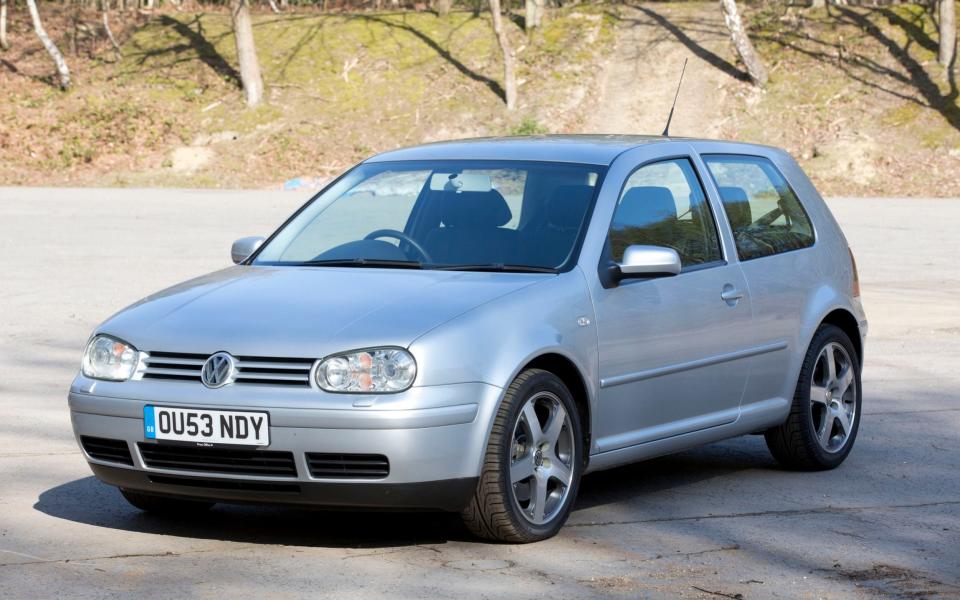
In fact, beyond the wheels and the badge, the Mk4 GTI was indistinguishable from any other Golf of the same vintage. If this understated aesthetic had been offset by raucous performance it would make more sense, but even this later 180bhp, 16-valve engine feels like any other car.
The 0-62mph time of 7.9 seconds was warmish at the time, but is still only half a second faster than the MkI I drove earlier. Dynamically I’d be having more fun in a standard Ford Focus of the same era, and let’s not forget that the RS and indeed Honda’s Civic Type R were both tearing up industrial estate carparks by the time this car was built in 2003.

The Mk4 Golf GTI isn’t a bad car by any stretch of the imagination but compared to any of the other cars we’ve brought to the track, it’s the most ordinary. Solid, well-built, practical – everything a hatchback should be. Just without the ingredients to justifiably call it “hot”.
Volkswagen Golf GTI Mk5 review
The fifth generation Golf GTI, meanwhile, is positively scorching. Introduced to the UK in 2005, this fantastic little car had the task of re-earning the GTI badge – a feat it achieved easily and immediately. Its 2.0-litre engine produced just shy of 200bhp, resulting in a considerable top speed of 146mph and an impressively swift 7.2-second 0-62mph time. This is the first time that the track feels too small and too slow for today’s shenanigans, as the Mk5 corners wonderfully, with very little roll or drama.
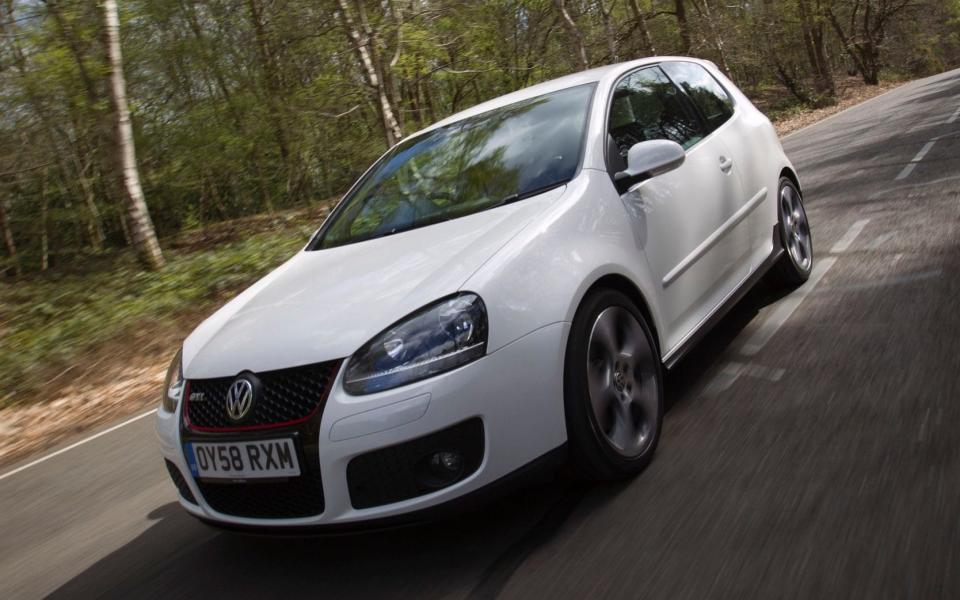
It’s also the first time I feel like I’m driving a properly modern car. The Mk5 Golf GTI has a torquey, lairy engine and a rewardingly laid-back attitude to bends that makes you keep pushing and pushing until you provoke a reaction. But the Mk5 Golf GTI also knows when it’s raining, will keep you and your front seat passenger comfortable at different temperatures, and will protect you both with airbags when you eventually roll it over.
Part of me expected the Mk5 to interrupt my misbehaviour with ‘driver aids’ and all the electronic niceties we’d come to expect by the start of the millennium. Happily, they’re relatively easy to turn off, and are pretty permissive when activated anyway. My only comments are that it’s too quick (which is more a weakness of the track I’ve booked than the car itself) and that the Ford Focus ST came out a year later.

Other than that, the Mk5 is probably my favourite Golf GTI. Which is lucky as they’re going cheap: a quick glance (read: repeated covetous gaze) at eBay suggests that you can find one for under £4,000. I can’t think of a better all-rounder for that sort of money.
Volkswagen Golf GTI Mk6 review
Such was the disappointment of the Mk4, the Mk5 felt like a reinvention of the GTI brand. The Mk6 is an extension of that new attitude, with a handful of extra horses and the same steady, unflappable handling that makes the previous model such an agreeable companion on twisty roads. It retains a slightly belligerent streak, as evidenced by the smirk-inducing wheelspin when setting off in a hurry, but it’s even easier to drive sensibly.
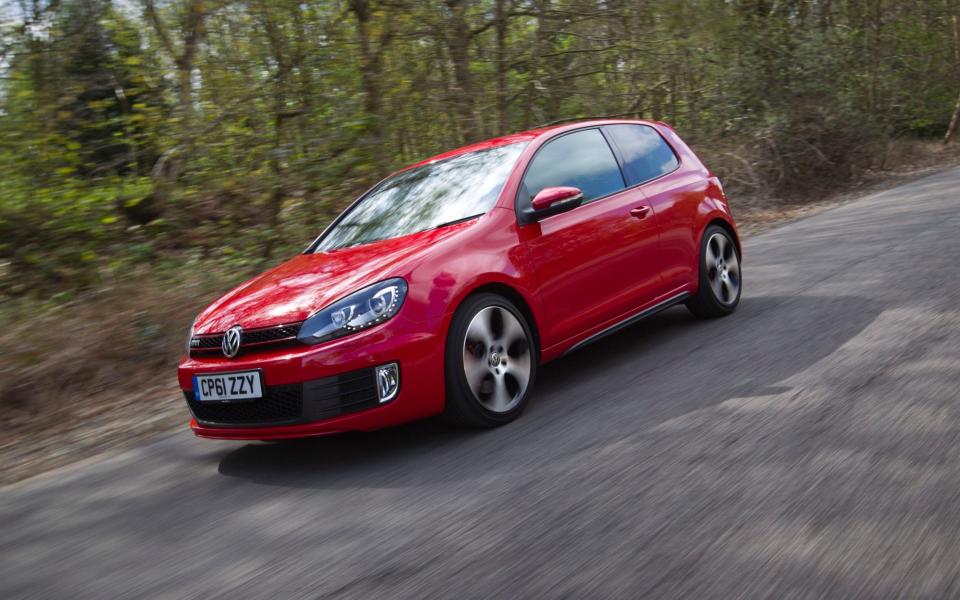
It’s around this point that the Golf GTI became an obvious choice for buyers, especially young families, who want everyday practicality but aren’t prepared to becoming boring just yet. You might have a kid and even a dog, but you still text with your thumbs and occasionally listen to dance music. This car lets you do both – steady school runs and monotonous motorway trips to see in-laws, with the option to take the ‘scenic’ route home.
The Mk5 is also the point at which the day becomes a road test. The Mk5 is so modern that I feel I should talk about fuel economy and boot space. I feel no particular affinity for it, but it's hard to ignore the overwhelming practicality and Germanic good looks of the Mk5.
Volkswagen Golf GTI Mk7 review
Volkswagen’s newest Golf GTI is its best, but not my favourite. It has a 2.0-litre engine that produces 227bhp, giving this latest GTI a 0-62mph time of 6.4 seconds. These are figures that would make it one of the most impressive cars on the road when the Mk1 was introduced.

It’s a very good car to drive. It’s sharp in the corners, with more grip than is really necessary and a reluctance to roll even slightly. The steering is nicely weighted for speed; you turn and it goes, with enough torque available across the rev range for pretty much whatever you’re trying to achieve. This is the physical manifestation of four decades of German engineering, and it’s very, very good.
But it’s also £32,940, as tested. Bloated in value by the ‘VW’ badge on the front, the ‘GTI’ badge on the back now refers to an expensive trim level on an upmarket car. Gone is the blue collar image and and pretence of accessibility; in 2017, the Volkswagen Golf GTI is a plush performance car for the quality-conscious well-to-do.

The Golf GTI’s high price is one of its key weaknesses. Wolfsburg has applied its expertise to other hatchbacks in its mighty stable, notably the smaller Seat and Skoda models. I’d rather have a Leon Cupra or an Octavia VRS than a Golf GTI, and they’d cost less too.
What’s more, super hatches like the Ford Focus RS and the upcoming Honda Civic Type R – both with over 100bhp more than the Golf – are within reach at this price point. Make no mistake, the cabin of the Focus RS feels like a wheelie bin when compared to the Germanic swank of the Golf, but that stops mattering as soon as you turn the key.
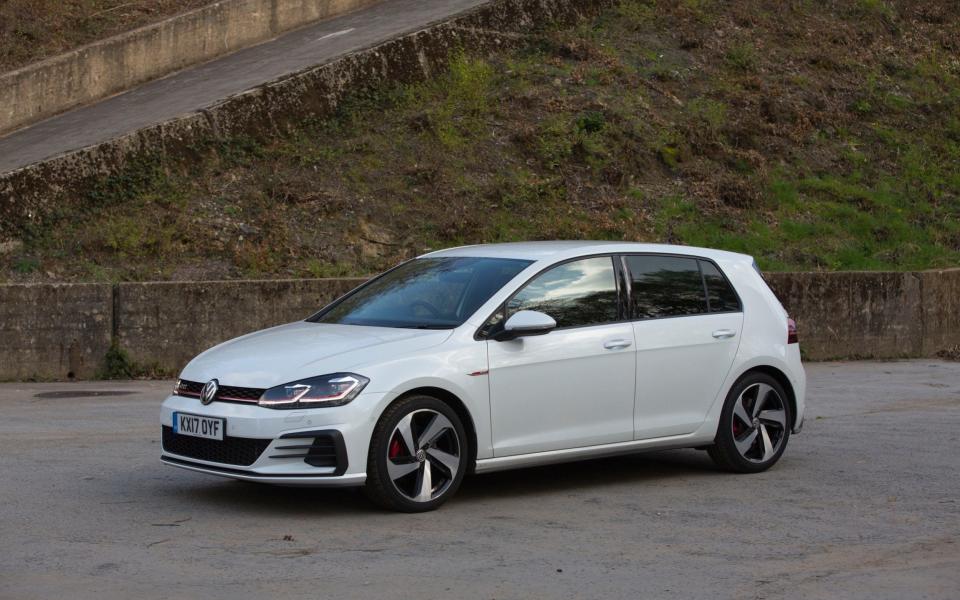
They’re expensive cars too, though. If I was going to buy a Golf GTI it wouldn’t be a new one. It probably wouldn’t even be a nearly-new one. I’ve liked every car I’ve driven today, but two stand out in particular: the Mk3 and the Mk5.
In conclusion
The Mk1 Golf GTI is a fascinating relic. I’m glad it existed, because it forms the foundation of the modern hot hatch segment and paved the way for some of my favourite cars. But I wouldn’t buy one, in the same way I wouldn’t buy a Ford Model T: a seminal piece of automotive engineering it might be, but it’s ancient history now, and I want brakes that work.
The Mk2 Golf GTI is more like it. It has modern manners, good looks and an interior that just works. I’m aware that it’s this machine that most people picture in their minds when they think of a Golf GTI, but it’s still not the one for me; it’s probably a better drive than anything else up to the MkIV, but my heart’s just not in it.
The Mk3 Golf GTI has, for whatever reason, captured my imagination. I love the way it looks, I like the way it drives. This, plus the fact you can buy non-terrible Mk3s for a grand on eBay, means that I’m probably going to add one to my driveway at some point.
The Mk4 Golf GTI was boring. Given the popularity of the standard, non-GTI Mk4, I think I’ve become immune to the way it looks, but the way it drives and the way it feels inside means it’s my least favourite. I’d rather have a Mk3, or a MkV. I wonder what the Mk4 would have been like if they’d put more effort in.
The Mk5 Golf GTI is one of the most sensible second-hand cars on the market. It’s more than a decade old but still benefits from the mod-cons we’ve come to expect from hot hatchbacks; balance, comfort, well-managed understeer and yes, brakes that actually work. The Mk5 is another high point in the 40-year history of the VW Golf GTI.
The Mk6 Golf GTI is hard to focus on. It’s outshone (in my view) by both the Mk5 that came before it and the latest Mk7, but it was the car that quietly consolidated the Golf GTI as the most competent all-rounder. It might not be the best to drive, but its market position cemented ‘GTI’ as the badge to look for when buying a souped-up family car.
The Mk7 Golf GTI is a brilliant thing, and simultaneously a victim of its own success. It’s priced out of reach of most buyers and is now clearly a premium car. Yes, the Mk3 arguably started this gentrification process, and yes the Mk3 is one of my favourites, but in its seventh generation and fresh from a facelift, the Golf GTI just doesn’t appeal to me anymore.
Visit Telegraph Cars for the latest features, road tests and news.

 Yahoo News
Yahoo News 
